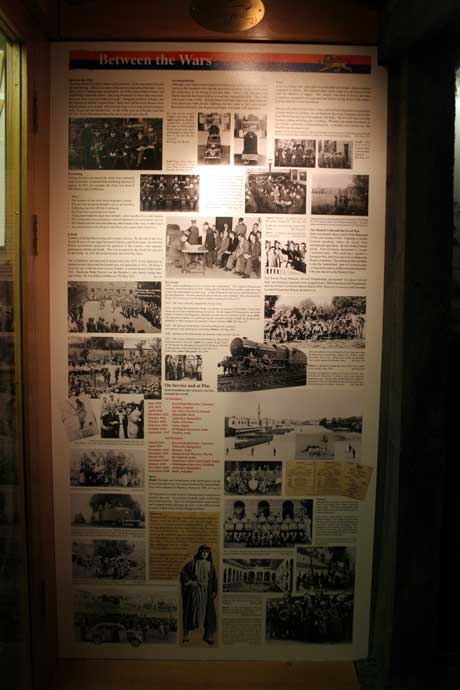 |
King's Own Royal Regiment Museum Lancaster |
|||||||||||||||||||||||||||||||||||||||||||||||||||||||||
|
HOME Museum & Collections Sales Donations Events Contact Us REGIMENTAL HISTORY 17th Century 18th Century 19th Century 20th Century First World War Second World War Actions & Movements Battle Honours FAMILY HISTORY Resources Further Reading PHOTO GALLERY ENQUIRIES FURTHER READING LINKS
© Images are copyright, Trustees of the King's Own Royal Regiment Museum. |
Museum Display Information Between The Wars
The First World War left a lasting impression on both the British Army and the Regiment. The horrors of the war had a profound affect upon those who served, and their families. Widespread pacifism affected recruiting, and the governments requirement to save money was one of the major influences upon the army. Recruiting During the inter-war period the army was constantly short of recruits. In 1937, for example, the Army was short of 980 officers and 20,000 men. The army had lost its appeal: Because:
Accommodation
Although some improvements had been made many soldiers were still housed
in stone built prison like barracks. Often they only had basic
facilities. Some soldiers had the misfortune to be accommodated in
wooden huts. These cold, draughty and depressing huts, built as a
temporary measure in 1914, were still in use in the 1950s. Food Army food improved - although it was still bland and simple. The standard three meals per day was increased to four with the addition of supper. The supper usually consisted of bread and jam. Cookhouse equipment was upgraded and bread slicers and potato peeling machines were introduced. Butter replaced margarine in rations. More important was the growth of the NAAFI - Navy Army and Air Force Institute - based upon the Army Canteens used in the First World War. The NAAFI ran both canteens and shops. It was a very big business selling anything and everything from bootlaces and razor blades to motor cars and boats to groceries and household goods. Tattooing
Although tattooing started in the navy it was popular with soldiers -
especially in India. The bazaar gudnawallah (tattoo artist) created
designs far cheaper than the tattooists in back at home. Key Events:
On Service and at Play Both battalions saw extensive service around the world, including India, Burma, Egypt and Palestine. 1st Battalion
2nd Battalion
Sport The Regiment excelled at sport winner many competitions between the wars. Association football, rugby and boxing all featured heavily. Sport encouraged fitness amongst the men, but also filled in time at some of the more remote foreign postings. Palestine The 2nd Battalion was deployed in Palestine, a British protectorate, from September 1938. Growing friction between the Arabs and Jews resulted in terrorist attacks and civil unrest. Palestine was of strategic importance located between Egypt, with the Suez Canal, and oil rich Iraq. The Eve of War During the 1938 ‘Munich Crisis’ the Depot undertook defensive work, including trench digging and air raid precaution measures. Nazi Germany threatened to invading Czechoslovakia, which would spark a European War. This was avoided by the Munich settlement which allowed Hitler to invade Czechoslovakia - as long as he made no further territorial demands. British Prime Minister Chamberlain declared ‘peace in out time’, and defensive measures were stepped down. Hitler had however deceived Chamberlain, and the invasion of Poland twelve months later resulted in war.
© Images are copyright, Trustees of the King's Own Royal Regiment Museum. Only a proportion of our collections are on display at anyone time. Certain items are on loan for display in other institutions. An appointment is required to consult any of our collections which are held in store. |

